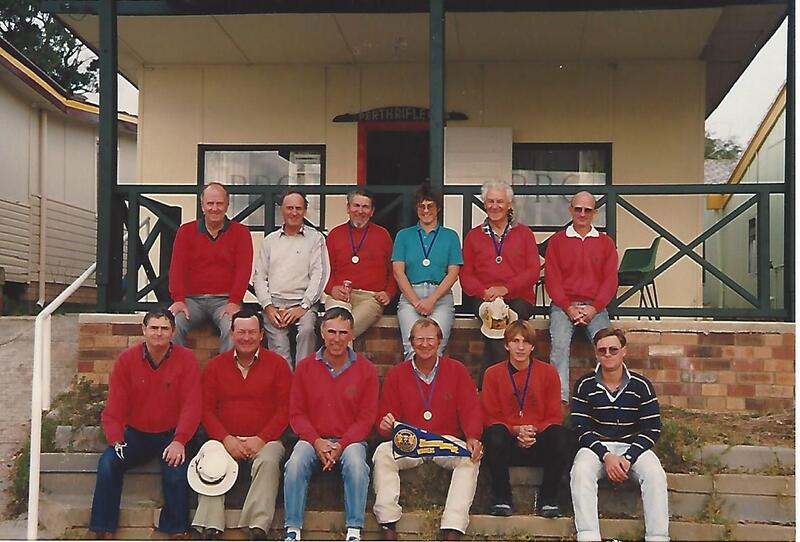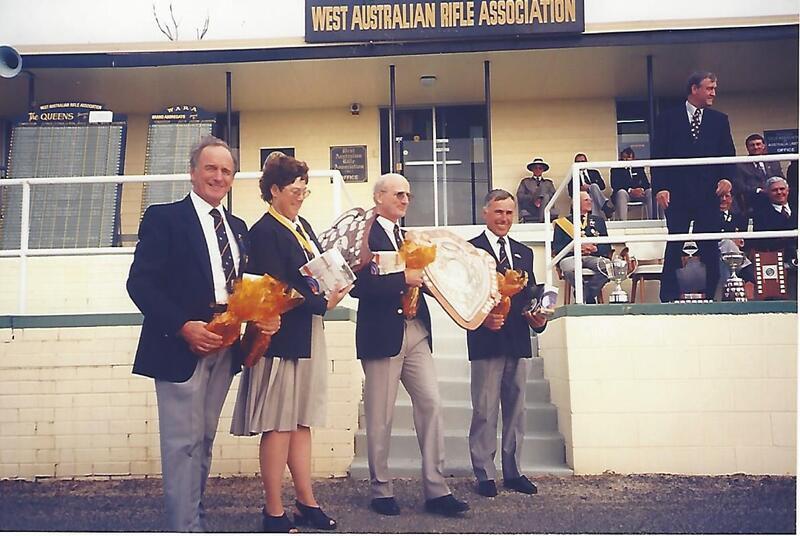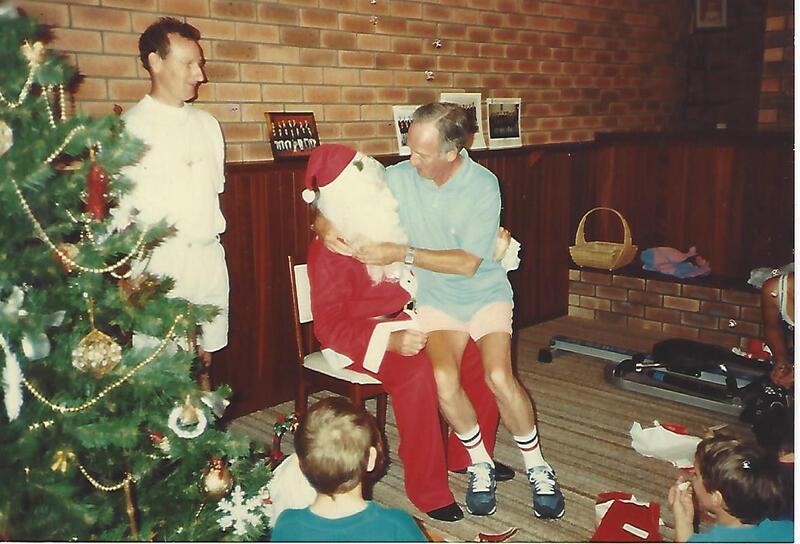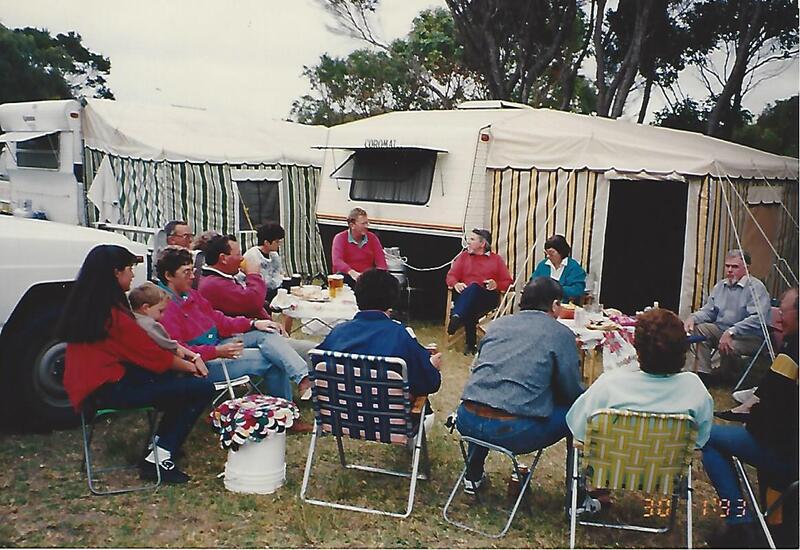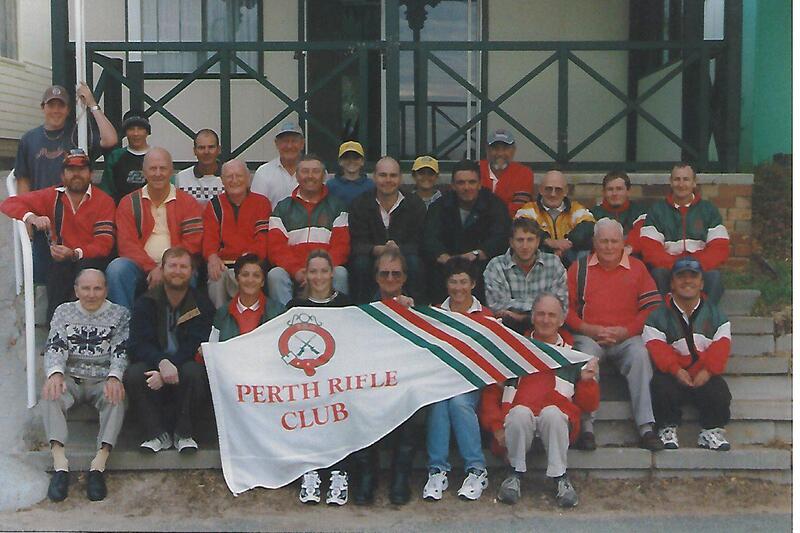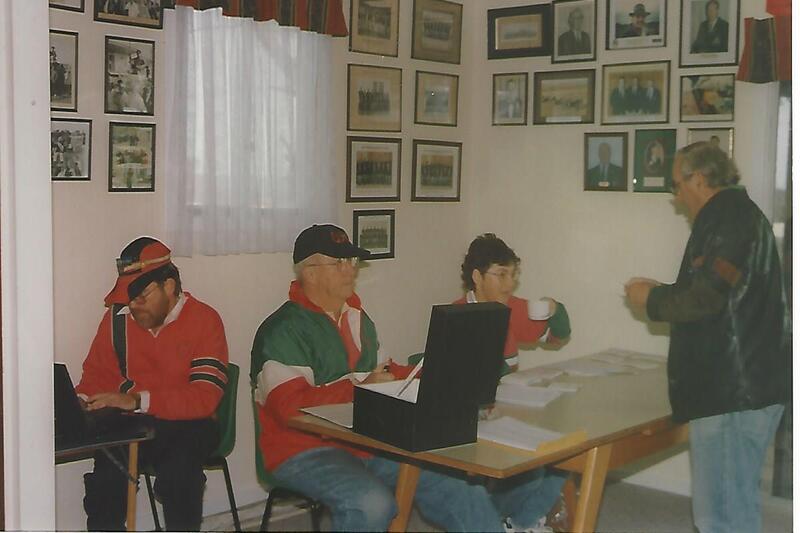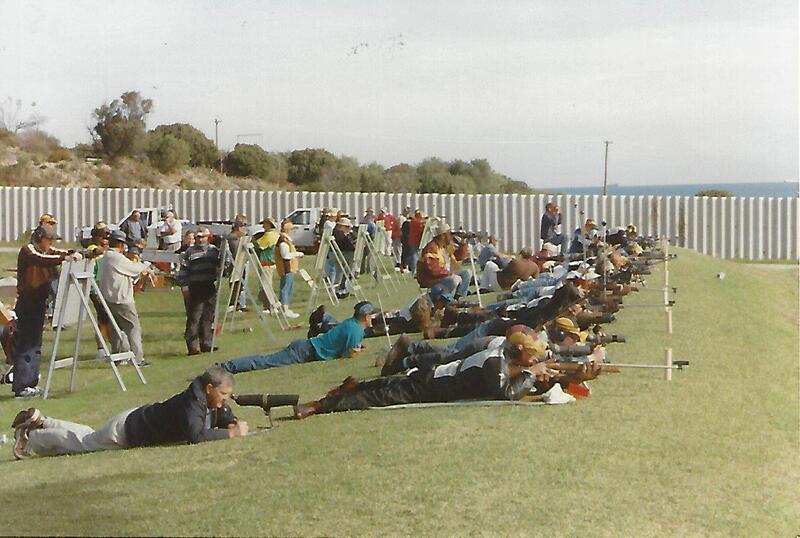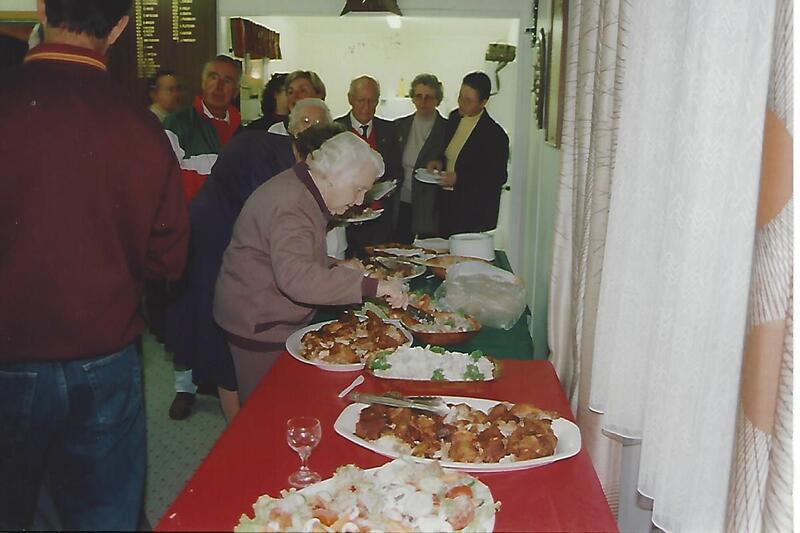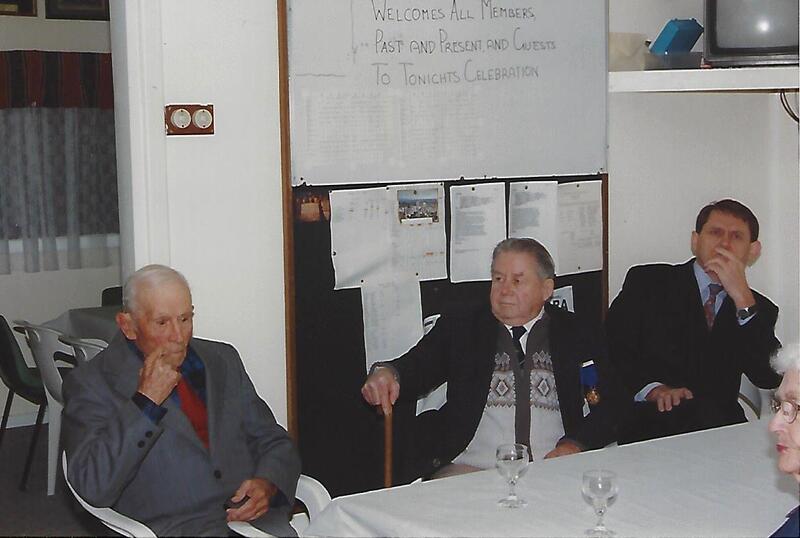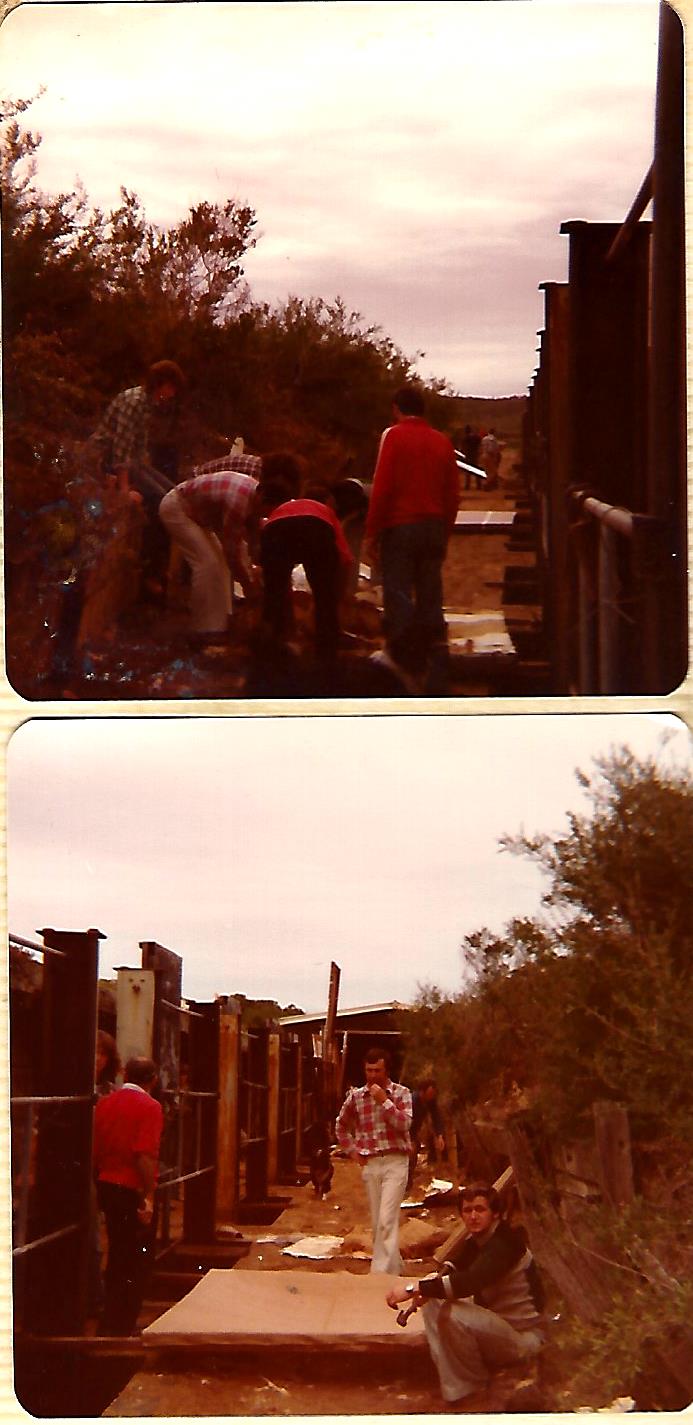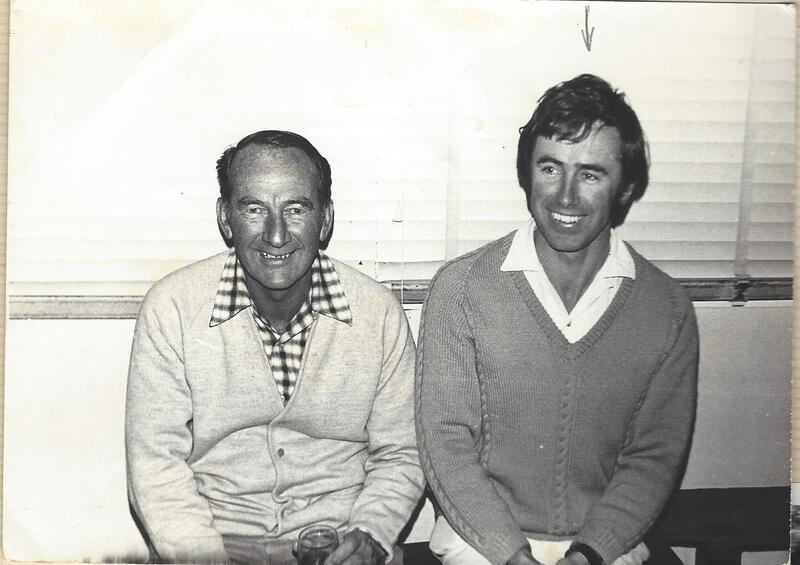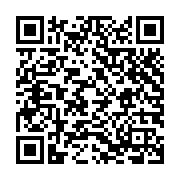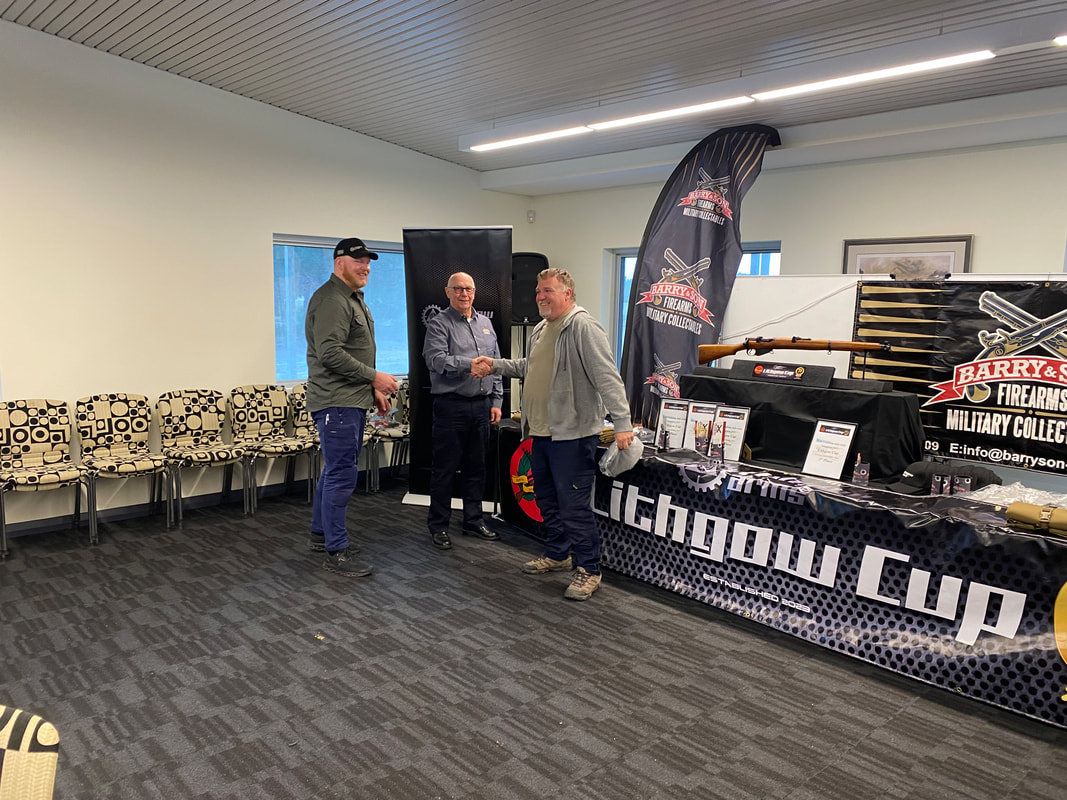A little bit of history goes a long way
|
Rifle shooting went hand in hand with the growth of this isolated but growing State. Since the early 1880's both the settlements of Perth and Fremantle had established Volunteer Rifle Corps. The Volunteer Corps were modelled on military service units and the volunteers were issued rank and required to attend meetings, parades and shooting dressed in their Corps uniforms. Shooting competitions arranged between the two Volunteer Corps often drew a large crowd of interested spectators. The Perth Volunteers shot at what is now known as Kings Park and the Fremantle Volunteers shot at South Beach, South Fremantle.
As the 1880's came to an end so did shooting at Kings Park and South Beach with the Volunteers moving shooting to Karrakatta. By the early 1900's civilian rifle clubs were established as successors to the colonial era Volunteer Corps. On the 12th July 1901 the inaugural meeting of the National Rifle Association of Western Australia was held and so started the civilian rifle shooting movement in Western Australia. From 1902/03 until 1909 two Kings Prize's (the premier competitions) were shot annually, one at Karrakatta the other at Kalgoorlie. In 1910, rifle shooting was unified under one State organisation with a single Kings Prize competition. With the advent of a visit from Lord Kitchener, the Karrakatta rifle range was deemed inappropriate and a new site was found at Osborne (later renamed, Swanbourne Rifle Range). Shooting commenced on this range in 1913. Perth and Fremantle Rifle Club History In Brief (For a detailed account of the Perth Rifle Club, please open the SCRIBD document on the top right of this page. To enlarge the document, press the 4 arrow button on the bottom right corner of the panel) Clubs have officially recognized colours. The colours of Perth in 1902 were Maroon and Green. The colours of Fremantle in 1902 were Green, Gold and Blue. The colours of Perth Fremantle from 2009 are Red, Gold and Green. The Perth and Fremantle Clubs held their first Annual General Meetings in 1902. Members of both Clubs competed successfully in the many competitions that were held between the more than 100 clubs in WA. Martin Lloyd, a founder of the Perth Club, was Western Australia’s first member of an Australian Team to travel to Bisley in 1903. Memberships accelerated towards 1914 in anticipation of the need for marksmen. The government sold second hand M.L.E. rifles (long), fitted with new barrels, to active members of rifle clubs. The Perth Rifle Club provided a recruitment service for the Australian Defence Forces. Club shooting continued throughout WW1. The 1920s and early 30s were a testing time for both Clubs with declining membership and economic hardship. John Curtin became a honorary vice president (patron) of the Fremantle Club. Both Clubs rebuilt membership with good shooting and an attractive range of social activities. Both Clubs saw success in the post second world war years with members winning many competitions including the Kings/Queens. Many returned servicemen and later their sons took up the sport. Members adjusted well to the introduction of 7.62mm calibre rifles in the late 1960s and early 70s. The Perth Club co-pioneered the introduction of F Class shooting in the new century and upon amalgamation the Perth-Fremantle Club has robustly supported the introduction of electronic targets, the introduction of F Class competition at the Queens, Sporter class and gong shooting. The PFRC is well placed to take the sport of target rifle shooting into the future. |
Your browser does not support viewing this document. Click here to download the document.
Your browser does not support viewing this document. Click here to download the document.
Use the QR code to go to Collections WA to view our collection of historic items
|
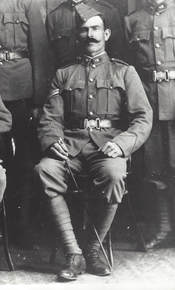
1890 - 1900
With the Volunteer and Militia defence movement giving way to the establishment of a national defence force from Federation, many volunteers looked to join the newly created rifle clubs. William (Bill) Garrity was one such rifleman. Bill had initially joined the Albany Artillery Garrison and then moved to the Plantagenet (Albany) Rifle Club where he won the Kings Prize at Kalgoorlie in 1910. He moved to the Perth Rifle Club representing the State at Bisley in 1913. He won the Kings again in 1927. Bill passed away in 1949.
Several attempts were made to form a Perth Rifle Club - early attempts were not encouraged by military authorities whose support was needed to access rifle ranges, ammunition and rifles.
WESTERN MAIL - News of the Week - 21 Feb 1896.
THE PROPOSED PERTH RIFLE CLUB
"The deputation which waited on the Commandant, Colonel Wilson, on Wednesday to ask for assistance in the formation of a civilian rifle club, did not receive an encouraging reply. The Commandant let it be under-stood that he thought little of the utility of rifle clubs as an auxiliary of the defence force. The clubs imparted no discipline to their members, and an undisciplined force, no matter what its shooting capabilities might be, was practically useless. The proposed club might also interfere with the volunteer forces by enticing away many of those who had only joined the volunteers because, of the opportunity afforded of indulging in rifle shooting. The Commandant pointed out that the volunteer forces gave some return to the Government for the money spent upon them, as the men became trainers and were liable to be called upon at any time to serve in aid of the civil power or against an enemy, but the rifle clubs gave no return. In conclusion the Commandant promised to place the request before the Premier, but intimated that he would be bound to make recommendations in accordance with the views he had expressed."
With the Volunteer and Militia defence movement giving way to the establishment of a national defence force from Federation, many volunteers looked to join the newly created rifle clubs. William (Bill) Garrity was one such rifleman. Bill had initially joined the Albany Artillery Garrison and then moved to the Plantagenet (Albany) Rifle Club where he won the Kings Prize at Kalgoorlie in 1910. He moved to the Perth Rifle Club representing the State at Bisley in 1913. He won the Kings again in 1927. Bill passed away in 1949.
Several attempts were made to form a Perth Rifle Club - early attempts were not encouraged by military authorities whose support was needed to access rifle ranges, ammunition and rifles.
WESTERN MAIL - News of the Week - 21 Feb 1896.
THE PROPOSED PERTH RIFLE CLUB
"The deputation which waited on the Commandant, Colonel Wilson, on Wednesday to ask for assistance in the formation of a civilian rifle club, did not receive an encouraging reply. The Commandant let it be under-stood that he thought little of the utility of rifle clubs as an auxiliary of the defence force. The clubs imparted no discipline to their members, and an undisciplined force, no matter what its shooting capabilities might be, was practically useless. The proposed club might also interfere with the volunteer forces by enticing away many of those who had only joined the volunteers because, of the opportunity afforded of indulging in rifle shooting. The Commandant pointed out that the volunteer forces gave some return to the Government for the money spent upon them, as the men became trainers and were liable to be called upon at any time to serve in aid of the civil power or against an enemy, but the rifle clubs gave no return. In conclusion the Commandant promised to place the request before the Premier, but intimated that he would be bound to make recommendations in accordance with the views he had expressed."

1901 - 1910
On the 23rd December 1901 a large number of gentlemen gathered at Theatre Royal Hotel to discuss the business of forming the Perth Rifle Club. With Mr. N. J. Vincent a most prominent officer of the Victorian Rifle Association taking the Chair, thirty five names were entered on the membership role.
The office-bearers were elected as follows: Patron, Sir John Forrest, G.C.M.G., P.C., Federal Minister for Defence; President, Sir George Shenton; Vice Presidents, to be elected by the committee; Captain, Mr. J. N. J. Vincent; Vice Captains, Captain Castles and Mr. R. Greaves. The Secretary was Mr. R. G. Ferguson and Assistant Secretary, Mr. N. W. Sundercombe. The Treasurer was Mr. G. Stubbs and the Auditors were Mr. J. M. Drummond and Mr. Barratt. The Committee included Messrs. A. Barlee, P. Cheese, J. W. Lloyd, J. G. Warner, J. H. McEacharn, C .Yeo, A. H. Sexton and J. L. Cake; with the captain, secretary, and treasurer as ex officio members. The first Annual General Meeting was held on the 7th January 1902.
On the 4th of April 1902 Fremantle Rifle Club held it first annual general meeting with the following officers being elected for the ensuing year. President, Mr. J. H. Eales; Vice-presidents, Mr. H. Briggs, MLC, and Mr De Lacey Bacon; Secretary and treasurer, Mr. A. Dean. Assistant secretary was Mr. S. Darrant and the auditors were Mr. F. Gallo and Mr. Richardson. Committee members included Messrs. J.H. Clouston, J. A. Naylor, L. Hicks, Sergeants Court and T.J. Lovegrove. Efforts were being made at this time to obtain the use of the Karrakatta range for rifle practice.
The absorption of volunteers into the regular army together with the outbreak of the Boer War encouraged many communities to form clubs. Some 38 communities formed clubs from 1900 to the end of 1902. Another 30 were formed in 1903 to 1904. The earliest clubs included Bunbury, Menzies, Greenbushes, Lawlers, North Danadlup, Leonora and South Perth. Leonora and South Perth still exist today.
Perth and Fremantle club members were keen competitors and travelled far and wide:
Prominent people were keen to support the rifle shooting movement. For example, local newspaper tycoon, Sir John Winthrop Hackett, donated the Dr Hackett Shield for teams competition. It was first competed for on the South Perth range which was located two miles east of the Zoo. Sir John Winthrop Hackett was the owner of the West Australian and a well known benefactor of many causes. His will provided for the founding of the University of WA.
The Perth Club won the competition in 1902 and again in 1903. However, in 1904 the West Australian reported:
"COOLGARDIE SECURES THE DR HACKETT SHIELD. (Held at Kalgoorlie) The annual prize meeting of the National Rifle Association of Western Australia is now nearing its close. Some of the most important events were decided yesterday. In the morning the firing at the 600 yards' range by the thirteen teams competing for the Dr. Hackett Challenge Shield was proceeded with. Unfortunately, the wind was very troublesome, and the light changeable. The completion of this contest was watched eagerly by the many riflemen present, in view of the keen rivalry between the Perth and the Coolgardie teams in particular. The members of the Perth Club, having already won the Shield twice (1902 and 1903), were naturally anxious to carry it off again, as success in their efforts would mean that the trophy would become their absolute property. On the other hand, the Coolgardie men were determined, if possible, to have a voice in the matter, and finally their endeavours were rewarded with success." THE WEST AUSTRALIAN - 2 Jan 1904
The Hackett Challenge Shield was designed to be shot over 200, 500 and 600 yards, 7 shots at each, two sightings allowed at each distance (not to count). The competition was open to teams of six (6) from any battalion, company, battery, or rifle club in-the 'State of Western Australia'. No man could shoot in more than one team. A handsome silver shield, mounted on polished jarrah wood, value at 20 guineas was presented by the Hon. J. W. Hackett. Ph.D., M.L.C. The shield was to be won three times before becoming the final property any one team. The prize money included: First prize, the Shield, Cup, and £15; second prize £10; and three prizes of £5 (THE WEST AUSTRALIAN - 2 Jan 1904).
The Fremantle Club had success at this time too with the Officers' Challenge Trophy, previously held by Captain Darrall, D.A.A.G., being won by J.A. Naylor, captain of the Fremantle Club, and the Dawson Shield.
Members from both clubs had much success in the premier events being held. R G Ferguson won the first Goldfield's Prize Meeting in 1902. M L Lloyd won the the Aggregate trophy at the first major prize meeting in Perth that same year. In 1905, A Wilson from the Perth club won the King's Prize at the Kalgoorlie event and R J Halliday (Fremantle Club) won the Grand aggregate at the Perth Kings Prize. Halliday won again in 1906 and 1908. F S Jones (Fremantle RC) won the King's prize in the 1909 Kalgoorlie event.
Rifles: A Shot in the Arm for Rifle Shooting in Western Australia.
The following extracts are from district orders by Lieut Colonel H. LeMesurier, dated March 26 1907:
SECOND HAND M.L.E. RIFLES (LONG)— SALE OF TO RIFLE CLUBS.
Referring to military order 1G9 of 16/7/1906. it is notified for the information of all concerned that second hand M.L.E. rifles (long), fitted with new barrels, may be sold to active members of rifle clubs at the following prices: — For cash, £2.15s. each; on deferred payment, £3 5s to be paid for in four instalments as follow:— First instalment of £1 payable on application; second instalment of £1 payable 12 months after the date of the first payment-- third instalment of 15s. payable two years after the date of the first payment, fourth instalment of 10s. payable three years after the date of the first payment; the last payment of 10s will be waived if, the purchaser- is classed as an 'efficient' for the three years subsequent to the' first payment.
Grants for Rifle Ranges. — Each new rifle club may receive a grant of money 'for the formation, construction, and equipment of its rifle range, provided, however, that the maximum grant to any club for such purpose shall not exceed £75. The amount of the grant to each club shall be governed by the report of the inspector of rifle ranges or other officer detailed to carry out the inspection, who, after inspecting the proposed site, will record his opinion as to the probable cost of construction and equipment, taking into consideration local conditions and requirements. In cases where at may be necessary to reconstruct, alter, or carry out any repair to any rifle range, a similar grant as above mentioned may be allowed, but when the cost of such reconstruction, alteration, or repair is estimated to exceed £20, the inspector of rifle ranges, or other officer detailed for that purpose, shall inspect such range, and report and record their opinion as to the probable cost of reconstruction, alteration, or repair.
Grants for the formation or repair will be subject to the following conditions respectively, and also to:
(a) provision being made by Parliament;
(b) the certificate of the officers supervising rifle clubs; and
(c) supporting vouchers for the expenditure.
However, that the maximum grant shall not exceed £75. Any club which shall establish a miniature rifle range may receive a grant of £10 towards the cost of its construction, provided that such club has not received more than £65 for the construction of its main range. No grant will be allowed towards the establishment of branch ranges in connection with any club.
DAILY NEWS - 6 April 1907.
On the 23rd December 1901 a large number of gentlemen gathered at Theatre Royal Hotel to discuss the business of forming the Perth Rifle Club. With Mr. N. J. Vincent a most prominent officer of the Victorian Rifle Association taking the Chair, thirty five names were entered on the membership role.
The office-bearers were elected as follows: Patron, Sir John Forrest, G.C.M.G., P.C., Federal Minister for Defence; President, Sir George Shenton; Vice Presidents, to be elected by the committee; Captain, Mr. J. N. J. Vincent; Vice Captains, Captain Castles and Mr. R. Greaves. The Secretary was Mr. R. G. Ferguson and Assistant Secretary, Mr. N. W. Sundercombe. The Treasurer was Mr. G. Stubbs and the Auditors were Mr. J. M. Drummond and Mr. Barratt. The Committee included Messrs. A. Barlee, P. Cheese, J. W. Lloyd, J. G. Warner, J. H. McEacharn, C .Yeo, A. H. Sexton and J. L. Cake; with the captain, secretary, and treasurer as ex officio members. The first Annual General Meeting was held on the 7th January 1902.
On the 4th of April 1902 Fremantle Rifle Club held it first annual general meeting with the following officers being elected for the ensuing year. President, Mr. J. H. Eales; Vice-presidents, Mr. H. Briggs, MLC, and Mr De Lacey Bacon; Secretary and treasurer, Mr. A. Dean. Assistant secretary was Mr. S. Darrant and the auditors were Mr. F. Gallo and Mr. Richardson. Committee members included Messrs. J.H. Clouston, J. A. Naylor, L. Hicks, Sergeants Court and T.J. Lovegrove. Efforts were being made at this time to obtain the use of the Karrakatta range for rifle practice.
The absorption of volunteers into the regular army together with the outbreak of the Boer War encouraged many communities to form clubs. Some 38 communities formed clubs from 1900 to the end of 1902. Another 30 were formed in 1903 to 1904. The earliest clubs included Bunbury, Menzies, Greenbushes, Lawlers, North Danadlup, Leonora and South Perth. Leonora and South Perth still exist today.
Perth and Fremantle club members were keen competitors and travelled far and wide:
- On the 24 - 27th June 1902 the Inaugural Goldfields Rifle Association Championships were held at Menzies and was won by R.G. Ferguson (Perth RC).
- On the 27 - 29th October 1902 the Spring Prize Meeting was held at the South Perth Rifle Range and was won by M L Lloyd (Perth RC).
Prominent people were keen to support the rifle shooting movement. For example, local newspaper tycoon, Sir John Winthrop Hackett, donated the Dr Hackett Shield for teams competition. It was first competed for on the South Perth range which was located two miles east of the Zoo. Sir John Winthrop Hackett was the owner of the West Australian and a well known benefactor of many causes. His will provided for the founding of the University of WA.
The Perth Club won the competition in 1902 and again in 1903. However, in 1904 the West Australian reported:
"COOLGARDIE SECURES THE DR HACKETT SHIELD. (Held at Kalgoorlie) The annual prize meeting of the National Rifle Association of Western Australia is now nearing its close. Some of the most important events were decided yesterday. In the morning the firing at the 600 yards' range by the thirteen teams competing for the Dr. Hackett Challenge Shield was proceeded with. Unfortunately, the wind was very troublesome, and the light changeable. The completion of this contest was watched eagerly by the many riflemen present, in view of the keen rivalry between the Perth and the Coolgardie teams in particular. The members of the Perth Club, having already won the Shield twice (1902 and 1903), were naturally anxious to carry it off again, as success in their efforts would mean that the trophy would become their absolute property. On the other hand, the Coolgardie men were determined, if possible, to have a voice in the matter, and finally their endeavours were rewarded with success." THE WEST AUSTRALIAN - 2 Jan 1904
The Hackett Challenge Shield was designed to be shot over 200, 500 and 600 yards, 7 shots at each, two sightings allowed at each distance (not to count). The competition was open to teams of six (6) from any battalion, company, battery, or rifle club in-the 'State of Western Australia'. No man could shoot in more than one team. A handsome silver shield, mounted on polished jarrah wood, value at 20 guineas was presented by the Hon. J. W. Hackett. Ph.D., M.L.C. The shield was to be won three times before becoming the final property any one team. The prize money included: First prize, the Shield, Cup, and £15; second prize £10; and three prizes of £5 (THE WEST AUSTRALIAN - 2 Jan 1904).
The Fremantle Club had success at this time too with the Officers' Challenge Trophy, previously held by Captain Darrall, D.A.A.G., being won by J.A. Naylor, captain of the Fremantle Club, and the Dawson Shield.
Members from both clubs had much success in the premier events being held. R G Ferguson won the first Goldfield's Prize Meeting in 1902. M L Lloyd won the the Aggregate trophy at the first major prize meeting in Perth that same year. In 1905, A Wilson from the Perth club won the King's Prize at the Kalgoorlie event and R J Halliday (Fremantle Club) won the Grand aggregate at the Perth Kings Prize. Halliday won again in 1906 and 1908. F S Jones (Fremantle RC) won the King's prize in the 1909 Kalgoorlie event.
Rifles: A Shot in the Arm for Rifle Shooting in Western Australia.
The following extracts are from district orders by Lieut Colonel H. LeMesurier, dated March 26 1907:
SECOND HAND M.L.E. RIFLES (LONG)— SALE OF TO RIFLE CLUBS.
Referring to military order 1G9 of 16/7/1906. it is notified for the information of all concerned that second hand M.L.E. rifles (long), fitted with new barrels, may be sold to active members of rifle clubs at the following prices: — For cash, £2.15s. each; on deferred payment, £3 5s to be paid for in four instalments as follow:— First instalment of £1 payable on application; second instalment of £1 payable 12 months after the date of the first payment-- third instalment of 15s. payable two years after the date of the first payment, fourth instalment of 10s. payable three years after the date of the first payment; the last payment of 10s will be waived if, the purchaser- is classed as an 'efficient' for the three years subsequent to the' first payment.
Grants for Rifle Ranges. — Each new rifle club may receive a grant of money 'for the formation, construction, and equipment of its rifle range, provided, however, that the maximum grant to any club for such purpose shall not exceed £75. The amount of the grant to each club shall be governed by the report of the inspector of rifle ranges or other officer detailed to carry out the inspection, who, after inspecting the proposed site, will record his opinion as to the probable cost of construction and equipment, taking into consideration local conditions and requirements. In cases where at may be necessary to reconstruct, alter, or carry out any repair to any rifle range, a similar grant as above mentioned may be allowed, but when the cost of such reconstruction, alteration, or repair is estimated to exceed £20, the inspector of rifle ranges, or other officer detailed for that purpose, shall inspect such range, and report and record their opinion as to the probable cost of reconstruction, alteration, or repair.
Grants for the formation or repair will be subject to the following conditions respectively, and also to:
(a) provision being made by Parliament;
(b) the certificate of the officers supervising rifle clubs; and
(c) supporting vouchers for the expenditure.
However, that the maximum grant shall not exceed £75. Any club which shall establish a miniature rifle range may receive a grant of £10 towards the cost of its construction, provided that such club has not received more than £65 for the construction of its main range. No grant will be allowed towards the establishment of branch ranges in connection with any club.
DAILY NEWS - 6 April 1907.
1911 - 1920
The Karrakatta rifle range was quite some distance to travel in the early days and Fremantle Rifle Club members sought a range much closer to home. The Sunday Times of 9 June 1912 reported that “The Fremantle Rifle Club visited the Congdon street [Cottesloe] range site for the first time yesterday, when they indulged in some field firing, there being a record attendance of members. The firing at figure targets at unknown distances from 700 to 200 yards resulted in H. Young securing first prize (a spoon) with four hits out of his ten shots. Captain H. J. Simper coming next with three hits.
Considerable delay was experienced owing to the fact that portion of the riflemen got absolutely bushed in traversing over the beautiful newly-made road which DOESN'T run from the station to the ranges. The [Defence] department promised some time ago that this very necessary road should be completed before shooting commenced, but so far it has made no sign of coming up to scratch, and the shooters must perforce find their way to the range through the bush as best they can.
The riflemen are naturally becoming more incensed at the added disabilities which the Defence Department has thrust upon them, and judging by the experience of yesterday very few will be found at Congdon street again unless things alter. One of the members of the Fremantle Club states that the range is altogether misplaced, the sun shining right into the eyes of the shooters at certain times of the day. What a gorgeous mess the Defence Department has made of the whole affair!”
However, in 1913 the military closed the Karrakatta range for civilian use and opened the Osborne (renamed Swanbourne from 1935) rifle range. Our club used that range, along with many other city clubs, until it was closed by the Department of Defence in 2014. Our club now shoots at Pinjar which is the WARA HQ range.
Individual and teams competitions were very popular during these years. The Perth Rifle Club presented the Commercial Tailoring Company Challenge Cup (valued at 25 guineas - now worth $3,100) for handicap teams competition to the Metropolitan Districts Rifle Union (now Association) in 1914. Teams competing for the cup following the war were: Perth, Fremantle, Leederville, Tramways, Wooroloo, Rocky Bay, ANA, Boan Bros (a department store), Darling Range, Crown Law (State Government department), Police, Post and Telegraph (forerunner to Telstra), South Perth, Water Supply, North Perth, Subiaco, Mines (State Govt department), Midland Junction Railways, AOF and Wholesale Soft goods (a business).
The Challenge Cup was renamed the Rocky Bay Cup in 1947 for Handicap Teams shooting with South Perth winning the Cup in 1947. The Rocky Bay Cup was competed for until shooting ended at Swanbourne.
WW1 found the Perth Club doing its bit by providing enlistment services and basic rifle training. Both clubs continued to operate during the war.
The Karrakatta rifle range was quite some distance to travel in the early days and Fremantle Rifle Club members sought a range much closer to home. The Sunday Times of 9 June 1912 reported that “The Fremantle Rifle Club visited the Congdon street [Cottesloe] range site for the first time yesterday, when they indulged in some field firing, there being a record attendance of members. The firing at figure targets at unknown distances from 700 to 200 yards resulted in H. Young securing first prize (a spoon) with four hits out of his ten shots. Captain H. J. Simper coming next with three hits.
Considerable delay was experienced owing to the fact that portion of the riflemen got absolutely bushed in traversing over the beautiful newly-made road which DOESN'T run from the station to the ranges. The [Defence] department promised some time ago that this very necessary road should be completed before shooting commenced, but so far it has made no sign of coming up to scratch, and the shooters must perforce find their way to the range through the bush as best they can.
The riflemen are naturally becoming more incensed at the added disabilities which the Defence Department has thrust upon them, and judging by the experience of yesterday very few will be found at Congdon street again unless things alter. One of the members of the Fremantle Club states that the range is altogether misplaced, the sun shining right into the eyes of the shooters at certain times of the day. What a gorgeous mess the Defence Department has made of the whole affair!”
However, in 1913 the military closed the Karrakatta range for civilian use and opened the Osborne (renamed Swanbourne from 1935) rifle range. Our club used that range, along with many other city clubs, until it was closed by the Department of Defence in 2014. Our club now shoots at Pinjar which is the WARA HQ range.
Individual and teams competitions were very popular during these years. The Perth Rifle Club presented the Commercial Tailoring Company Challenge Cup (valued at 25 guineas - now worth $3,100) for handicap teams competition to the Metropolitan Districts Rifle Union (now Association) in 1914. Teams competing for the cup following the war were: Perth, Fremantle, Leederville, Tramways, Wooroloo, Rocky Bay, ANA, Boan Bros (a department store), Darling Range, Crown Law (State Government department), Police, Post and Telegraph (forerunner to Telstra), South Perth, Water Supply, North Perth, Subiaco, Mines (State Govt department), Midland Junction Railways, AOF and Wholesale Soft goods (a business).
The Challenge Cup was renamed the Rocky Bay Cup in 1947 for Handicap Teams shooting with South Perth winning the Cup in 1947. The Rocky Bay Cup was competed for until shooting ended at Swanbourne.
WW1 found the Perth Club doing its bit by providing enlistment services and basic rifle training. Both clubs continued to operate during the war.
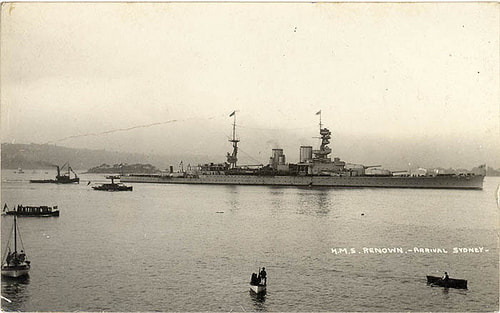
1921 - 1930
The First World War had a devastating effect on Australia. There were less than 3 million men in Australia in 1914, yet almost 400,000 of them volunteered to fight in the war. An estimated 60,000 died and tens of thousands were wounded.
Many returned servicemen suffered from injuries from which they never successfully recovered. While it is not possible to adequately account for the impact of the war on the Perth and Fremantle Clubs here, the club records show that membership suffered and illness was frequently mentioned as keeping office bearers from fulfilling their duties.
Many Captains' annual reports referred to a decline in discipline, shooters turning up too late and too frequent disputes over team selection and handicapping. Club harmony was severely tested in 1921 with a long running dispute at Fremantle over when a competition should be abandoned for the day due to inclement weather and the late muster of shooters.
The Clubs could not recruit young members as they had before the war. However amalgamations such as the Crown Law and Boans (a Department Store) clubs with Perth and Fremantle helped stem the decline a little. Many members were unable at times to pay their subscriptions and attendances fell away towards the end of the 1920s (from 12-15 to only 6 each on a Saturday) so much that Fremantle compelled to reduce the number of targets from 2 to 1 and insist that the Leederville Club pay a fee for the use of the Fremantle target. The Perth Club had its share of problems with solicitor’s letters being needed in 1929 to extract a sum of 33 pounds from a former secretary. The money was not fully recovered until 1934.
The manager of the Fremantle branch of the WA Bank demanded that the Fremantle Club’s account be put in credit. A letter of indignation was sent back indicating that the bank held security for the overdraft and because of the Managers attitude the Club was closing the account and transferring its business to the Commonwealth Bank. Not helping matters was a theft by two boys in 1924 of telescopes, sights and other material from the Fremantle Club. Both were caught and most items were recovered.
The popular pre-war discipline of miniature range (smallbore) shooting fell away and was largely abandoned. The Fremantle Club shot at Drill Halls in Fremantle including HMAS Cerberus V (Croke & Mouat Streets).
On a brighter note, despite a decline in membership, those that remained became enthusiastic travellers to country clubs including York, Beverley, Jarrahdale, Collie, Moora, Round Hill (east of Moora) and Namban (north of Moora). The Clubs enjoyed their Kings Prize meetings and frequently won matches. Perth’s Bill Garrity won in 1927. In 1926 Fremantle member R J Halliday won The Kings Prize at Kalgoorlie. A record entry of 15 Fremantle club members attended. On the back of Fremantle winning the Hannan cup and Levinson shield, the Club decided to buy a red Australian ensign with FRC to be embroidered in the corner. Shooters also enjoyed competitions against visiting warships including the Battle Cruiser HMS Renown and HMAS Marguerite (an Arabis-class sloop).
Sponsors were generous to the clubs. Trophies were obtained from Seppelt and Sons, Ezywalkin shoe stores and the Commercial Tailoring Company amongst others.
In 1922 the Fremantle club decided to delay partaking of refreshments until after the monthly meetings were concluded. Refreshments were provided by the venue for the meetings. Until June 1929, Fremantle met at the Terminus Hotel. Built 1887 as the Pearlers Hotel, it is now a medical centre. The Club moved to the Oddfellows Hotel in July 1929. The Oddfellows Hotel (now the Norfolk Hotel) was built in 1887 by George Alfred Davies on the corner of Norfolk Street and South Terrace. The Perth Club on the other hand met at Protestant House. No doubt making up for the lack of refreshments by hiring the steam ferry Emerald to visit Garden Island in 1928.
The Clubs shifted their club houses to Swanbourne in the 1920s and enjoyed the slow roll out of the long ranges by the Army. The Long range opened in 1928. There was concern that the 200yd range was too close and 1000 range too far to shoot but both continued to be used. Far greater challenges lay ahead as the Depression deepened in the 1930s.
The First World War had a devastating effect on Australia. There were less than 3 million men in Australia in 1914, yet almost 400,000 of them volunteered to fight in the war. An estimated 60,000 died and tens of thousands were wounded.
Many returned servicemen suffered from injuries from which they never successfully recovered. While it is not possible to adequately account for the impact of the war on the Perth and Fremantle Clubs here, the club records show that membership suffered and illness was frequently mentioned as keeping office bearers from fulfilling their duties.
Many Captains' annual reports referred to a decline in discipline, shooters turning up too late and too frequent disputes over team selection and handicapping. Club harmony was severely tested in 1921 with a long running dispute at Fremantle over when a competition should be abandoned for the day due to inclement weather and the late muster of shooters.
The Clubs could not recruit young members as they had before the war. However amalgamations such as the Crown Law and Boans (a Department Store) clubs with Perth and Fremantle helped stem the decline a little. Many members were unable at times to pay their subscriptions and attendances fell away towards the end of the 1920s (from 12-15 to only 6 each on a Saturday) so much that Fremantle compelled to reduce the number of targets from 2 to 1 and insist that the Leederville Club pay a fee for the use of the Fremantle target. The Perth Club had its share of problems with solicitor’s letters being needed in 1929 to extract a sum of 33 pounds from a former secretary. The money was not fully recovered until 1934.
The manager of the Fremantle branch of the WA Bank demanded that the Fremantle Club’s account be put in credit. A letter of indignation was sent back indicating that the bank held security for the overdraft and because of the Managers attitude the Club was closing the account and transferring its business to the Commonwealth Bank. Not helping matters was a theft by two boys in 1924 of telescopes, sights and other material from the Fremantle Club. Both were caught and most items were recovered.
The popular pre-war discipline of miniature range (smallbore) shooting fell away and was largely abandoned. The Fremantle Club shot at Drill Halls in Fremantle including HMAS Cerberus V (Croke & Mouat Streets).
On a brighter note, despite a decline in membership, those that remained became enthusiastic travellers to country clubs including York, Beverley, Jarrahdale, Collie, Moora, Round Hill (east of Moora) and Namban (north of Moora). The Clubs enjoyed their Kings Prize meetings and frequently won matches. Perth’s Bill Garrity won in 1927. In 1926 Fremantle member R J Halliday won The Kings Prize at Kalgoorlie. A record entry of 15 Fremantle club members attended. On the back of Fremantle winning the Hannan cup and Levinson shield, the Club decided to buy a red Australian ensign with FRC to be embroidered in the corner. Shooters also enjoyed competitions against visiting warships including the Battle Cruiser HMS Renown and HMAS Marguerite (an Arabis-class sloop).
Sponsors were generous to the clubs. Trophies were obtained from Seppelt and Sons, Ezywalkin shoe stores and the Commercial Tailoring Company amongst others.
In 1922 the Fremantle club decided to delay partaking of refreshments until after the monthly meetings were concluded. Refreshments were provided by the venue for the meetings. Until June 1929, Fremantle met at the Terminus Hotel. Built 1887 as the Pearlers Hotel, it is now a medical centre. The Club moved to the Oddfellows Hotel in July 1929. The Oddfellows Hotel (now the Norfolk Hotel) was built in 1887 by George Alfred Davies on the corner of Norfolk Street and South Terrace. The Perth Club on the other hand met at Protestant House. No doubt making up for the lack of refreshments by hiring the steam ferry Emerald to visit Garden Island in 1928.
The Clubs shifted their club houses to Swanbourne in the 1920s and enjoyed the slow roll out of the long ranges by the Army. The Long range opened in 1928. There was concern that the 200yd range was too close and 1000 range too far to shoot but both continued to be used. Far greater challenges lay ahead as the Depression deepened in the 1930s.
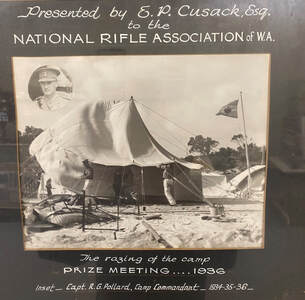
1931 - 1940
The 1930s were a testing time for Perth and Fremantle. Membership continued to decline for the first 5 years or so. Membership fees for Fremantle rose to £1 ($74 today) in 1930. They were just 5 shillings at Perth in 1934. New ‘short’ rifles were introduced from 1933 but many members found it difficult to pay the £4 even on terms. The reduction in free ammunition from 100 rounds to 50 in 1935 did not help matters. Money and enthusiasm for social events declined and Fremantle temporarily abandoned them in 1937 after an embarrassing failure of the two Fremantle Club organisers to turn up to run an event after the 1936 AGM.
The conditions for competing for trophies were ongoing sore points for some members, made worse when the prizes in the shape of hams did not materialise in 1937.
The stalwart office bearers, elected after the Great War, were gradually replaced in the early 1930s. Fremantle’s President Major General AT White was replaced by W Watson, MHR. Long time Captain, AG Brice was replaced by FG Lathlain in 1931 and he in turn was replaced by HA Gordon 1935 and EC Simper in 1937. There was a significant turnover in office bearers thereafter. The opposite occurred over at Perth, Jack Emerton was elected Secretary in 1931 and was to hold the position for 21 years. Long serving President Martin Lloyd was replaced shortly after his death by his son Cliff Burgess Lloyd who held the position for 30 years.
The Fremantle Club elected a large number of honorary vice presidents including from 1929 to 1931, John Curtin, member for Fremantle and future war time prime minister. Local members and mayors of Fremantle, East Fremantle, North Fremantle and Cottesloe and on one occasion, the Mayor of Claremont was also elected.
Fremantle’s meetings switched to Newcastle club hotel in 1932 and the Commercial Travellers club in 1938. Perth continued its abstinence when it switched venues to Pastoral House and later Orient House.
There was only an oblique reference to the start of WW2 in 1939 when an enquiry was made to reinstate Mr Ward as a marker. His services had been replaced some time earlier in favour of returned soldiers. By 1940, both clubs were urging members to participate in buying war bonds and other activities. The Fremantle Club sought to enrol members of Fremantle's Home Service Corps.
Annual Prize Dinner. It has long been a tradition that Perth – Fremantle Rifle Club members and spouses gather together for an annual prize presentation dinner. We enjoy a great meal and with a minimum number of speeches honour those fortunate and skilful enough to win a trophy during the year. We also have a bit of fun by participating in a raffle or some other activity. Newspaper reports show that very similar events were held in the past although the ‘fun’ events have changed somewhat. In 1934, the Sunday Times reported:
“A gay evening was spent at the Arundale Hall [Cnr James & Museum Streets and owned by the Theosophical Society] on Saturday May 12 by members of the Perth Rifle Club and a large number of friends. The president, Mr. Martin Lloyd, welcomed the Commandant, Brigadier Martyn, who distributed the many trophies won by club members during the year 1933. Interposed between the dances were musical items rendered by Messrs. Keith McKenzie, C. A. Lloyd, and J Eastmon, and flute solos by Mr. Paul Buddee. As an encore. Mr. Buddee gave an enthusiastic audience the first public, rendering of his own composition, "The Dance of the Banksia Cones."
THE 'Dance of the Banksia Cones' may well have been in reference to the popular Australian stories Snugglepot and Cuddlepie by West Aussie born May Gibbs that featured the Banksia Men.
The 1930s were a testing time for Perth and Fremantle. Membership continued to decline for the first 5 years or so. Membership fees for Fremantle rose to £1 ($74 today) in 1930. They were just 5 shillings at Perth in 1934. New ‘short’ rifles were introduced from 1933 but many members found it difficult to pay the £4 even on terms. The reduction in free ammunition from 100 rounds to 50 in 1935 did not help matters. Money and enthusiasm for social events declined and Fremantle temporarily abandoned them in 1937 after an embarrassing failure of the two Fremantle Club organisers to turn up to run an event after the 1936 AGM.
The conditions for competing for trophies were ongoing sore points for some members, made worse when the prizes in the shape of hams did not materialise in 1937.
The stalwart office bearers, elected after the Great War, were gradually replaced in the early 1930s. Fremantle’s President Major General AT White was replaced by W Watson, MHR. Long time Captain, AG Brice was replaced by FG Lathlain in 1931 and he in turn was replaced by HA Gordon 1935 and EC Simper in 1937. There was a significant turnover in office bearers thereafter. The opposite occurred over at Perth, Jack Emerton was elected Secretary in 1931 and was to hold the position for 21 years. Long serving President Martin Lloyd was replaced shortly after his death by his son Cliff Burgess Lloyd who held the position for 30 years.
The Fremantle Club elected a large number of honorary vice presidents including from 1929 to 1931, John Curtin, member for Fremantle and future war time prime minister. Local members and mayors of Fremantle, East Fremantle, North Fremantle and Cottesloe and on one occasion, the Mayor of Claremont was also elected.
Fremantle’s meetings switched to Newcastle club hotel in 1932 and the Commercial Travellers club in 1938. Perth continued its abstinence when it switched venues to Pastoral House and later Orient House.
There was only an oblique reference to the start of WW2 in 1939 when an enquiry was made to reinstate Mr Ward as a marker. His services had been replaced some time earlier in favour of returned soldiers. By 1940, both clubs were urging members to participate in buying war bonds and other activities. The Fremantle Club sought to enrol members of Fremantle's Home Service Corps.
Annual Prize Dinner. It has long been a tradition that Perth – Fremantle Rifle Club members and spouses gather together for an annual prize presentation dinner. We enjoy a great meal and with a minimum number of speeches honour those fortunate and skilful enough to win a trophy during the year. We also have a bit of fun by participating in a raffle or some other activity. Newspaper reports show that very similar events were held in the past although the ‘fun’ events have changed somewhat. In 1934, the Sunday Times reported:
“A gay evening was spent at the Arundale Hall [Cnr James & Museum Streets and owned by the Theosophical Society] on Saturday May 12 by members of the Perth Rifle Club and a large number of friends. The president, Mr. Martin Lloyd, welcomed the Commandant, Brigadier Martyn, who distributed the many trophies won by club members during the year 1933. Interposed between the dances were musical items rendered by Messrs. Keith McKenzie, C. A. Lloyd, and J Eastmon, and flute solos by Mr. Paul Buddee. As an encore. Mr. Buddee gave an enthusiastic audience the first public, rendering of his own composition, "The Dance of the Banksia Cones."
THE 'Dance of the Banksia Cones' may well have been in reference to the popular Australian stories Snugglepot and Cuddlepie by West Aussie born May Gibbs that featured the Banksia Men.
Burgess Lloyd
The Burgess Lloyd Gold Medal trophy was introduced in 1936 and won by the Perth Rifle club treasurer E C Gare. The trophy was named in honour of Mr Martin Luther Lloyd who was a founder of the Club. Martin was Western Australia’s first member of an Australian Team to travel to Bisley in 1903. Martin was born in Franklin Tasmania in 1861 and joined the Tasmanian Volunteer Corps in 1884 and finished second in the Tasmanian Rifle Championships. Martin moved to Victoria and in 1889 joined the Melbourne Rifle Club & won 30 pounds in VRA Prize Meeting. Martin married Ellen Isobel Burgess in 1882 and moved to Perth in 1892. He promptly joined the WA Metropolitan Rifles Volunteer Corps and in 1896 participated in an all comer shoot at the opening of the Karrakatta Rifle Range. He was President of the Club until his death in 1935. He was succeeded in the position by his son Clifford Arthur Burgess Lloyd.
The Burgess Lloyd Gold Medal trophy was introduced in 1936 and won by the Perth Rifle club treasurer E C Gare. The trophy was named in honour of Mr Martin Luther Lloyd who was a founder of the Club. Martin was Western Australia’s first member of an Australian Team to travel to Bisley in 1903. Martin was born in Franklin Tasmania in 1861 and joined the Tasmanian Volunteer Corps in 1884 and finished second in the Tasmanian Rifle Championships. Martin moved to Victoria and in 1889 joined the Melbourne Rifle Club & won 30 pounds in VRA Prize Meeting. Martin married Ellen Isobel Burgess in 1882 and moved to Perth in 1892. He promptly joined the WA Metropolitan Rifles Volunteer Corps and in 1896 participated in an all comer shoot at the opening of the Karrakatta Rifle Range. He was President of the Club until his death in 1935. He was succeeded in the position by his son Clifford Arthur Burgess Lloyd.
1941 -1950
With the outbreak of war, the Clubs endeavoured to assist with ‘musketry’ training. However, the Government quickly ceased the supply of ammunition and took away equipment. The Perth Club invested 16 pounds in war savings certificates before going into recess.
The Fremantle Club at this time elected the Honourable John Tonkin as a vice president. A member of the Australian Labor Party, he served as a Member of the Western Australian Legislative Assembly for a record 44 years from 1933 to 1977, and was the 20th Premier of Western Australia, serving from the 1971 election until the 1974 election.
Most clubs set about re-establishing themselves from late 1946. Perth members met on 18 June 1946 at Orient House. The Fremantle Club met at the Rendezvous Cafe, 90 High St, Fremantle (now a NAB bank) on 23 August 1946. Existing office bearers were re-elected until a full meeting could be held. Perth met twice more and in March 1947 got the club off the ground by enrolling members for 10 shillings each and selling the club .22 rifles to members to raise money to buy .303 rifles. Life Member Colin Robinson (author of a history of the Perth Rifle Club) joined on 27 July 1947. Colin was a fire brigade employee that rose to be chief fire officer of WA. He was also a drummer in a dance band that played at the Club's first social after the war held in the Druids Hall. Colin recalled that 30 to 40 targets were in use at Swanbourne at this time.
The Fremantle Club quickly moved to resume shooting and introduced a simpler trophy competition designed to prevent the problems experienced before the war. The club champion would be determined by the highest off rifle score over 2 shoots on each range. A similar scheme was put into place for the Dunkerton Trophy Handicap Championship.
The Fremantle Club House was in a sad state of repair and a sand drift threatened one wall. Finances were poor and the Club sought to sell its pre-war trophies (many of which had a high level of silver) including the Chamber of Mines Shield to the NRA for 50 pounds. It is not clear but it seems that this trophy was eventually donated and renamed the Frank Simper Trophy after the Fremantle life member. Eventually 4 prominent citizens led by Sir Frank Gibson (President) donated the 25 pounds needed to repair the club house and remove the sand. In the same year the Keenan cup was offered to Sir Frank Gibson to be located in mayor’s parlour until needed by club. Is it still there?
By 1949, post war shortages notwithstanding, both clubs had thoroughly re-established themselves and became forces to be reckoned with in MDU (metropolitan district union) competitions.
With the outbreak of war, the Clubs endeavoured to assist with ‘musketry’ training. However, the Government quickly ceased the supply of ammunition and took away equipment. The Perth Club invested 16 pounds in war savings certificates before going into recess.
The Fremantle Club at this time elected the Honourable John Tonkin as a vice president. A member of the Australian Labor Party, he served as a Member of the Western Australian Legislative Assembly for a record 44 years from 1933 to 1977, and was the 20th Premier of Western Australia, serving from the 1971 election until the 1974 election.
Most clubs set about re-establishing themselves from late 1946. Perth members met on 18 June 1946 at Orient House. The Fremantle Club met at the Rendezvous Cafe, 90 High St, Fremantle (now a NAB bank) on 23 August 1946. Existing office bearers were re-elected until a full meeting could be held. Perth met twice more and in March 1947 got the club off the ground by enrolling members for 10 shillings each and selling the club .22 rifles to members to raise money to buy .303 rifles. Life Member Colin Robinson (author of a history of the Perth Rifle Club) joined on 27 July 1947. Colin was a fire brigade employee that rose to be chief fire officer of WA. He was also a drummer in a dance band that played at the Club's first social after the war held in the Druids Hall. Colin recalled that 30 to 40 targets were in use at Swanbourne at this time.
The Fremantle Club quickly moved to resume shooting and introduced a simpler trophy competition designed to prevent the problems experienced before the war. The club champion would be determined by the highest off rifle score over 2 shoots on each range. A similar scheme was put into place for the Dunkerton Trophy Handicap Championship.
The Fremantle Club House was in a sad state of repair and a sand drift threatened one wall. Finances were poor and the Club sought to sell its pre-war trophies (many of which had a high level of silver) including the Chamber of Mines Shield to the NRA for 50 pounds. It is not clear but it seems that this trophy was eventually donated and renamed the Frank Simper Trophy after the Fremantle life member. Eventually 4 prominent citizens led by Sir Frank Gibson (President) donated the 25 pounds needed to repair the club house and remove the sand. In the same year the Keenan cup was offered to Sir Frank Gibson to be located in mayor’s parlour until needed by club. Is it still there?
By 1949, post war shortages notwithstanding, both clubs had thoroughly re-established themselves and became forces to be reckoned with in MDU (metropolitan district union) competitions.
1951 - 1960
Rifle shooting consolidated and developed in the post war years. Membership grew with Fremantle recording 42 efficient (paid up active) shooters. Metro clubs linked together with army units to shoot the Merrit Cup with Perth wining in 1951. In 1956 Wilfred Owen (Bill) Connell transferred to Perth from Bellevue. Bill, his son (Stan) and grandson (Grant) have participated in Club, State and Australia rifle shooting teams across the decades. All three have held leadership positions in our club and been highly successful in competitions.
Rifle shooting consolidated and developed in the post war years. Membership grew with Fremantle recording 42 efficient (paid up active) shooters. Metro clubs linked together with army units to shoot the Merrit Cup with Perth wining in 1951. In 1956 Wilfred Owen (Bill) Connell transferred to Perth from Bellevue. Bill, his son (Stan) and grandson (Grant) have participated in Club, State and Australia rifle shooting teams across the decades. All three have held leadership positions in our club and been highly successful in competitions.
1961 - 1970
Club members regularly contributed to Metropolitan and State teams travelling across and inter State.
Club members regularly contributed to Metropolitan and State teams travelling across and inter State.
1971 - 1980
The Fremantle and Perth Clubs enjoyed considerable success both on the range and in their respective club houses. The Fremantle Club in particular had a vibrant social and shooting scene with success on the range from members Jack and Laurie Ward, Bill Maker, Phil and Bruce Philips, Des Tyler, David and Marianne Lascelles, Les Fossilo and many others putting in weekly award winning scores. David Lascelles led the Fremantle team to victory over a Murray Districts team in 1982. The following year Fremantle shooter Les Fossilo won the 1983 Queens Prize. Also 1983, Des Tyler moved up to A Grade where he has remained to this day regularly shooting club championship winning scores.
The Fremantle Club was strengthened during the 1980s with a number of women taking up the sport. Mary Murphy, Debbie Pearman and Leslie Cobb regularly shot well. The Clubs 30 plus members enjoyed social nights and the introduction of a newsletter was well received.
More digging deep into the records is required before we can complete the history of this decade for the Perth and Fremantle Clubs.
The Fremantle and Perth Clubs enjoyed considerable success both on the range and in their respective club houses. The Fremantle Club in particular had a vibrant social and shooting scene with success on the range from members Jack and Laurie Ward, Bill Maker, Phil and Bruce Philips, Des Tyler, David and Marianne Lascelles, Les Fossilo and many others putting in weekly award winning scores. David Lascelles led the Fremantle team to victory over a Murray Districts team in 1982. The following year Fremantle shooter Les Fossilo won the 1983 Queens Prize. Also 1983, Des Tyler moved up to A Grade where he has remained to this day regularly shooting club championship winning scores.
The Fremantle Club was strengthened during the 1980s with a number of women taking up the sport. Mary Murphy, Debbie Pearman and Leslie Cobb regularly shot well. The Clubs 30 plus members enjoyed social nights and the introduction of a newsletter was well received.
More digging deep into the records is required before we can complete the history of this decade for the Perth and Fremantle Clubs.
1981 - 1990
Over at Perth, new member Peter Green was reported in the Canberra Times of 1989 as being “.. a narrow winner of Canberra Rifle Club's 75th Anniversary Prize meeting fired on Wednesday at McIntosh Rifle Range. Green, Tasmanian Michael Sweet, of Macquarie Plains club, and Helen Whatley, of Victoria's Castlemaine club, all scored a possible 120 points. Their positions were determined on the number of central bullseyes scored. A New Zealander by birth, Green has won the Ballinger Belt, the equivalent of the National Queen's Prize in Australia. Green is a member of the current Western Australian rifle team, which competed in the National Teams Championships earlier this week.”
Over at Perth, new member Peter Green was reported in the Canberra Times of 1989 as being “.. a narrow winner of Canberra Rifle Club's 75th Anniversary Prize meeting fired on Wednesday at McIntosh Rifle Range. Green, Tasmanian Michael Sweet, of Macquarie Plains club, and Helen Whatley, of Victoria's Castlemaine club, all scored a possible 120 points. Their positions were determined on the number of central bullseyes scored. A New Zealander by birth, Green has won the Ballinger Belt, the equivalent of the National Queen's Prize in Australia. Green is a member of the current Western Australian rifle team, which competed in the National Teams Championships earlier this week.”

1991 - 2000
Club members travelled far and wide competing in district and local competitions.
Club members travelled far and wide competing in district and local competitions.
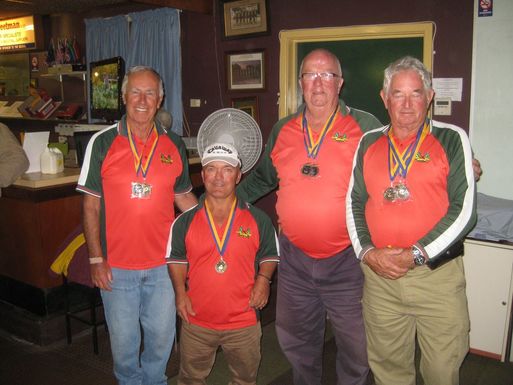 Stan Connell, Grant Connell, Chris Hope and Des Tyler - Close to a combined 180 years of shooting experience.
Stan Connell, Grant Connell, Chris Hope and Des Tyler - Close to a combined 180 years of shooting experience.
2001 - 2010
The new century heralded change and innovation. The F Class discipline was introduced with surprising results. Proponets thought that scoped rifles on rests would give older shooters a chance to extend their shooting careers. The Club was pleasantly surprised to find that in reality it attracted a number of bench rest and sporting shooters. Later, as word got around, a number of new-to-shooting people found F Class to be to their liking. Aiding this welcome development was the introduction of electronic targets at Swanbourne. The MDRA clubs pioneered this innovation in Australia and the WARA held the first Australian Queens to have the Krongsberg target system. This era was also a time of change with the amalgamation of the Perth and Fremantle Clubs. The new Perth - Fremantle Club set about consolidating the change and adapting to the innovations in rifle shooting for decade ahead.
The combined club saw new success in team events.
The new century heralded change and innovation. The F Class discipline was introduced with surprising results. Proponets thought that scoped rifles on rests would give older shooters a chance to extend their shooting careers. The Club was pleasantly surprised to find that in reality it attracted a number of bench rest and sporting shooters. Later, as word got around, a number of new-to-shooting people found F Class to be to their liking. Aiding this welcome development was the introduction of electronic targets at Swanbourne. The MDRA clubs pioneered this innovation in Australia and the WARA held the first Australian Queens to have the Krongsberg target system. This era was also a time of change with the amalgamation of the Perth and Fremantle Clubs. The new Perth - Fremantle Club set about consolidating the change and adapting to the innovations in rifle shooting for decade ahead.
The combined club saw new success in team events.
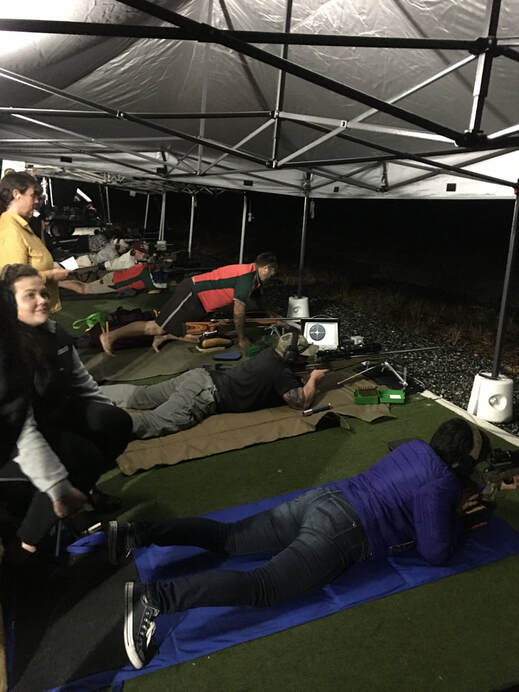 Night Shooting at Pinjar
Night Shooting at Pinjar
2011 - 2015.
The fortunes of the Club were aided with further innovation including the development of this website by the Club in 2012. The site was been directly responsible for attracting a large number of visitors to the Club, many of whom have taken out membership. So many in fact that the Club has purchased a third electronic target, new club rifles and implemented a training programme. The challenge ahead was seen to be to nurture and retain members particularly when the Club moved to the new Pinjar Range.
On the 12th December 2015 the last shot was fired on the Swanbourne rifle range and many members gathered to say farewell to a range that many had know for more than 30 years and some more than 50. It had been the headquarters rifle range of the Western Australian Rifle Association WARA and the Metropolitan District Rifle Association and it's member clubs home range for 102 years.
2016 onwards
After shooting up at the Bindoon range, the club moved to the new Pinjar facility in 2017 where the club continues to promote and innovate rifle shooting. Innovations include night shooting, gong shooting and .22 shooting.
The introduction of Gong (Precision Steel Series) shooting and the Sporter (formally Hunter) Class has attracted many new members. The club has responded by introducing a gong shooting program in addition to the traditional afternoon shooting for centre fire. In 2023, the Club held the first ever Sporter Class focussed prize meeting. Sponsored by Lithgow Arms and Barry and Sons, the event included 3 applications at 700metres at Pinjar. The Lithgow company provided two firearms as prizes and Barry and Son a range of other prizes including the perpetual 'cup' which is a Lithgow .303 on a mount (see picture). The inaugural winner was Ethon Kearney from the Carnarvon Club. A number of our members also won prizes including Damion Clover (see picture below).
The fortunes of the Club were aided with further innovation including the development of this website by the Club in 2012. The site was been directly responsible for attracting a large number of visitors to the Club, many of whom have taken out membership. So many in fact that the Club has purchased a third electronic target, new club rifles and implemented a training programme. The challenge ahead was seen to be to nurture and retain members particularly when the Club moved to the new Pinjar Range.
On the 12th December 2015 the last shot was fired on the Swanbourne rifle range and many members gathered to say farewell to a range that many had know for more than 30 years and some more than 50. It had been the headquarters rifle range of the Western Australian Rifle Association WARA and the Metropolitan District Rifle Association and it's member clubs home range for 102 years.
2016 onwards
After shooting up at the Bindoon range, the club moved to the new Pinjar facility in 2017 where the club continues to promote and innovate rifle shooting. Innovations include night shooting, gong shooting and .22 shooting.
The introduction of Gong (Precision Steel Series) shooting and the Sporter (formally Hunter) Class has attracted many new members. The club has responded by introducing a gong shooting program in addition to the traditional afternoon shooting for centre fire. In 2023, the Club held the first ever Sporter Class focussed prize meeting. Sponsored by Lithgow Arms and Barry and Sons, the event included 3 applications at 700metres at Pinjar. The Lithgow company provided two firearms as prizes and Barry and Son a range of other prizes including the perpetual 'cup' which is a Lithgow .303 on a mount (see picture). The inaugural winner was Ethon Kearney from the Carnarvon Club. A number of our members also won prizes including Damion Clover (see picture below).
